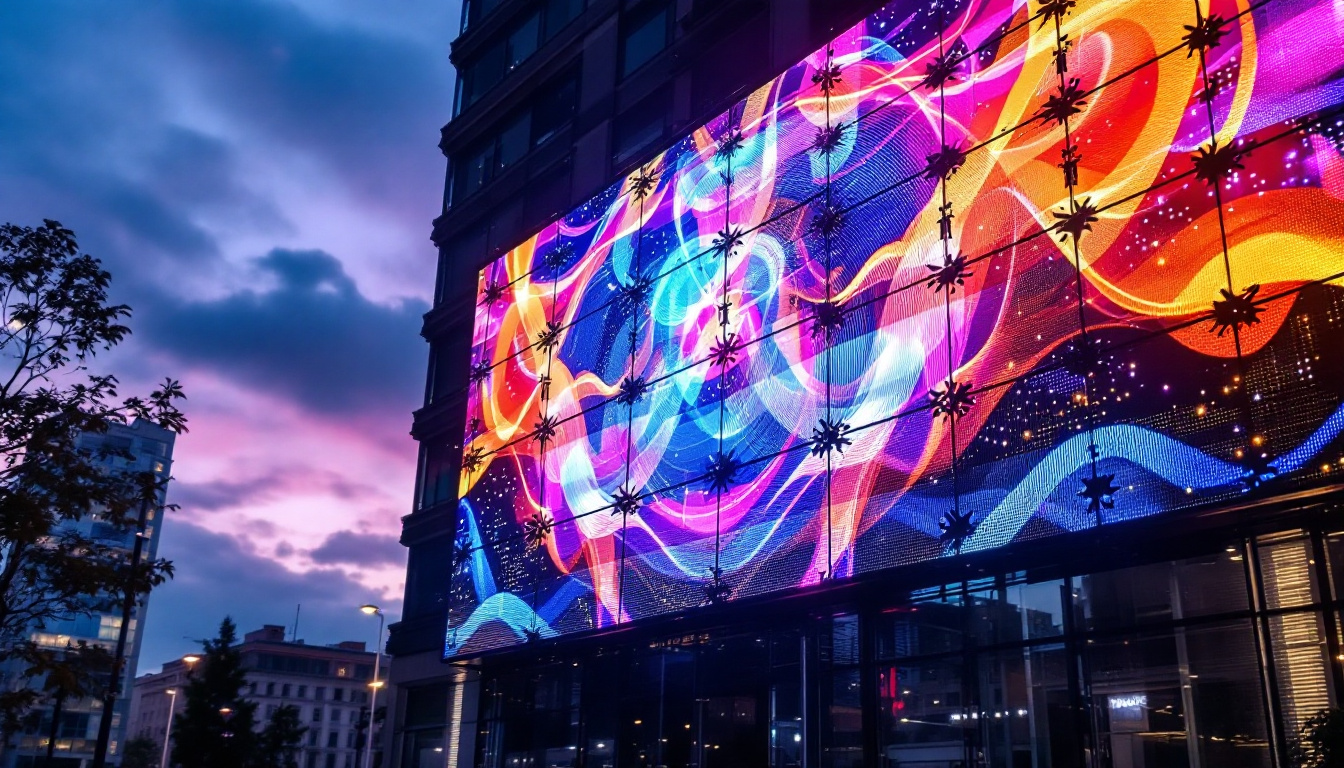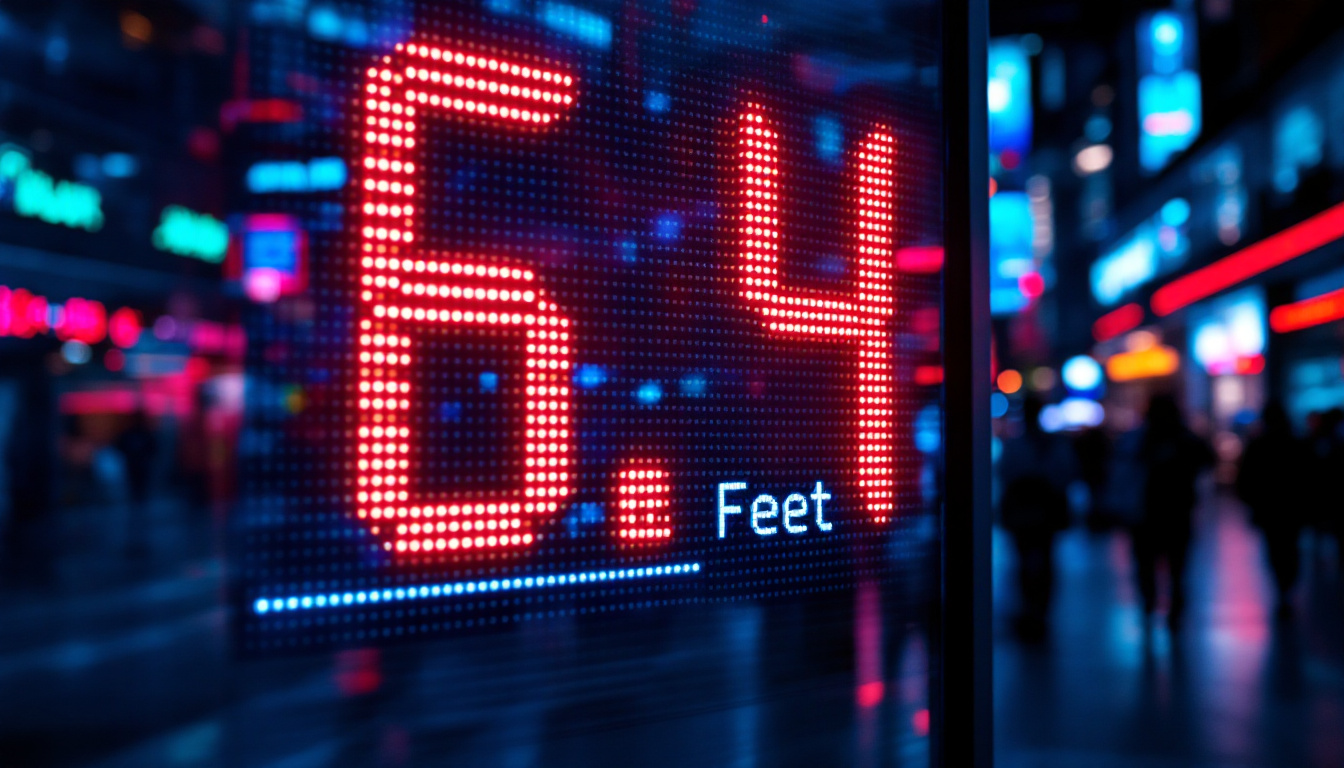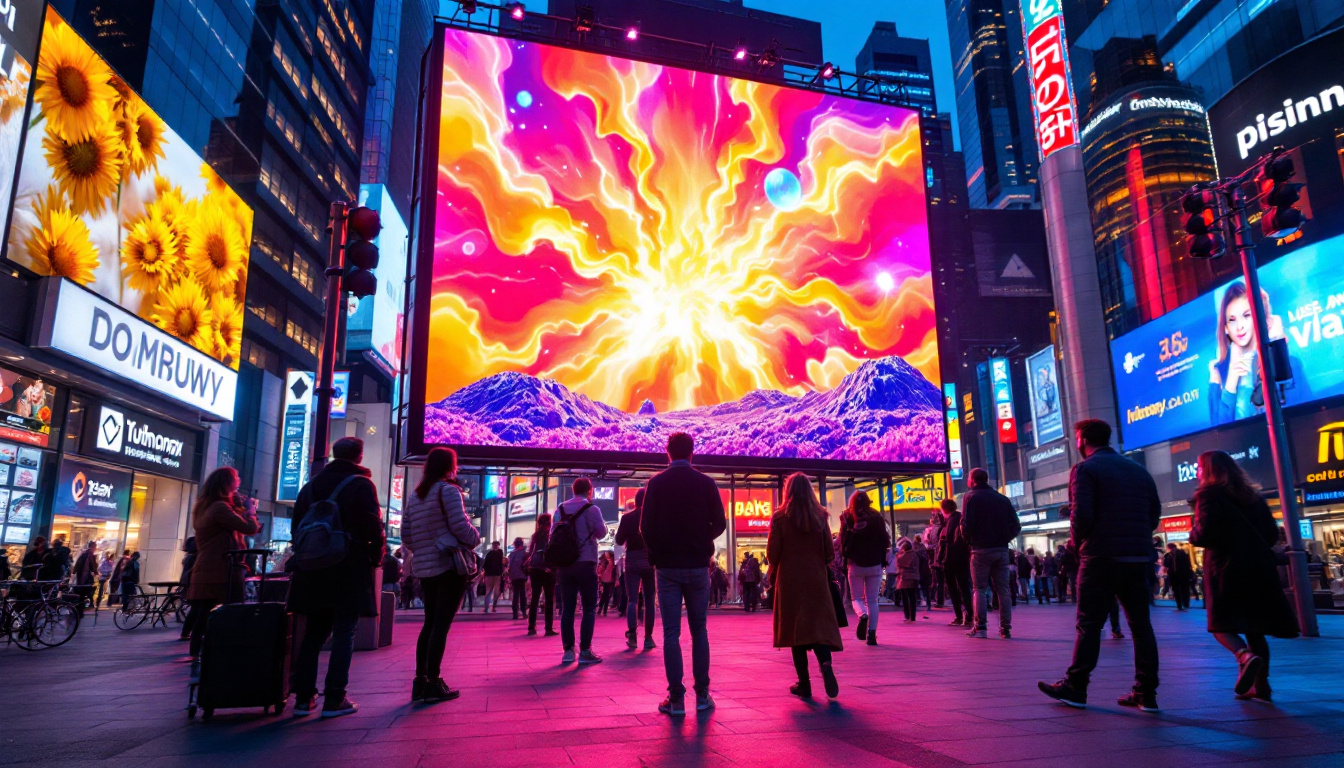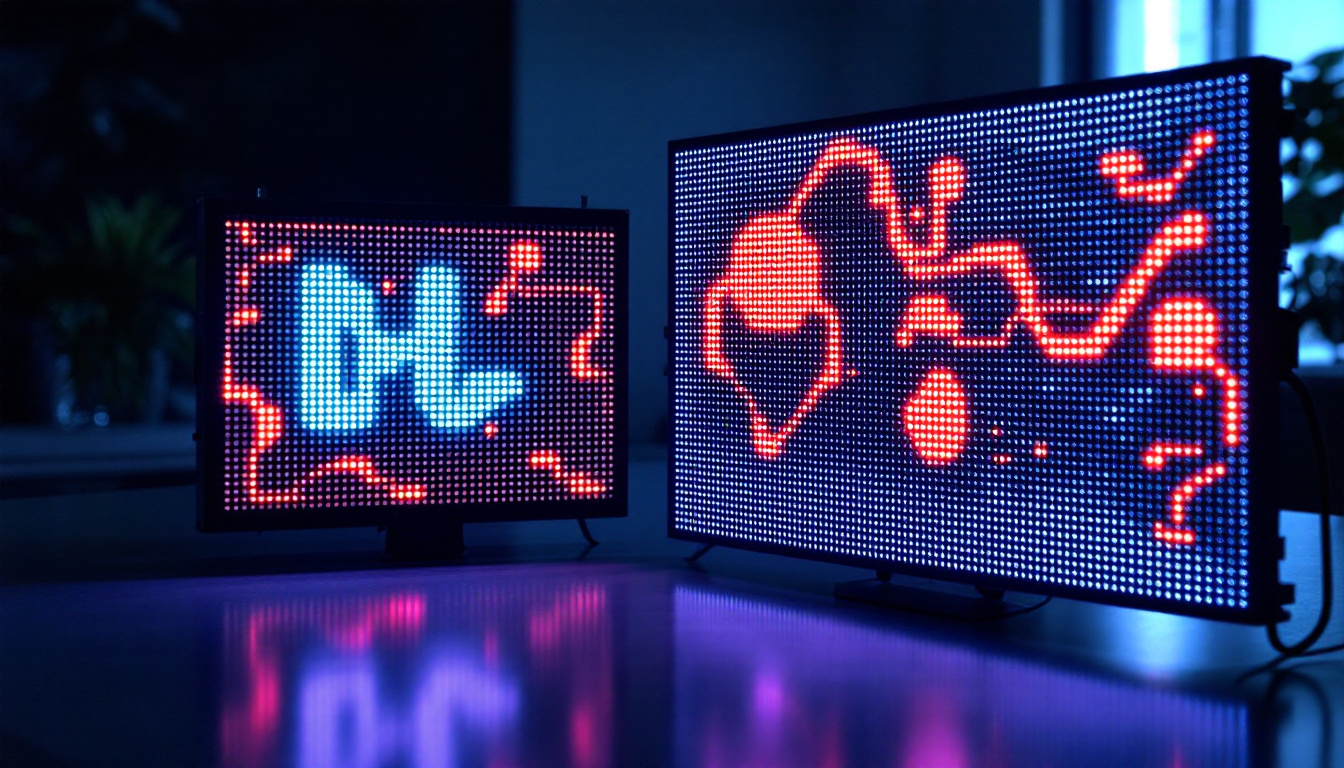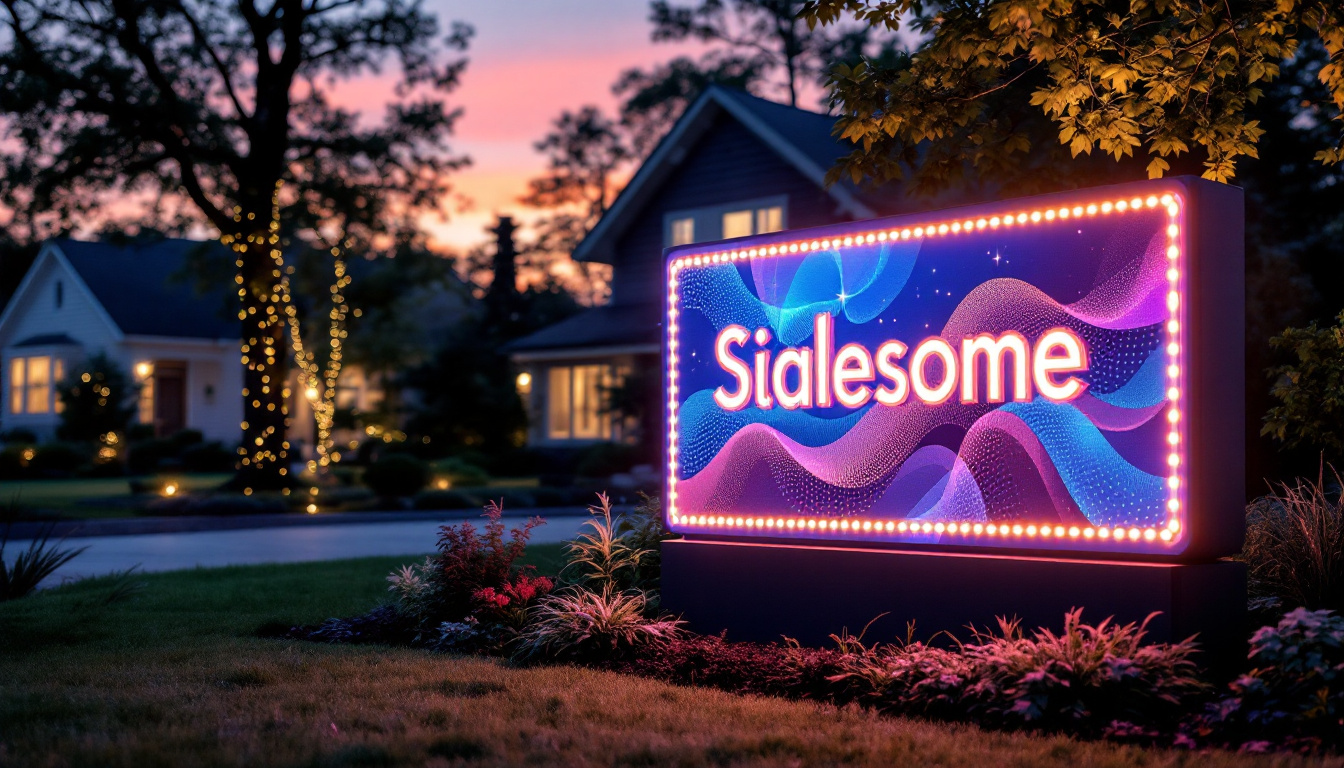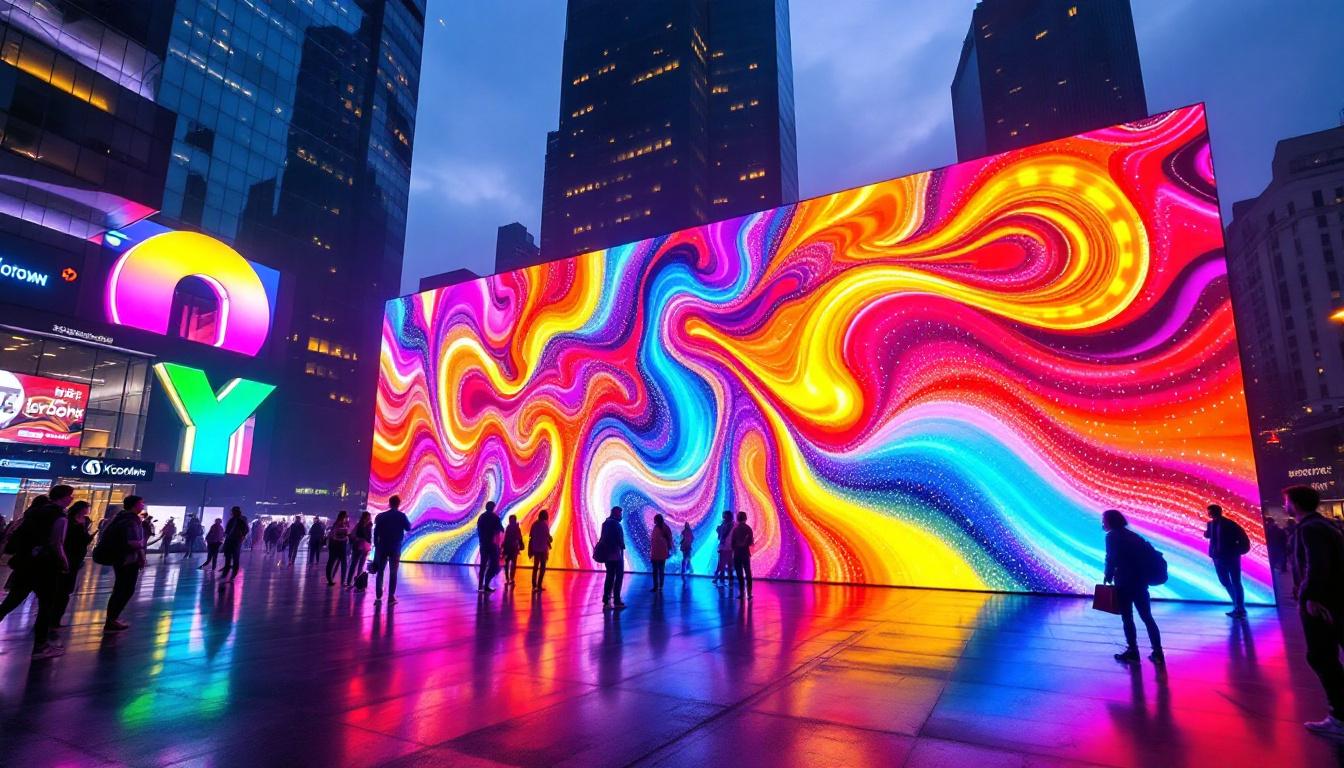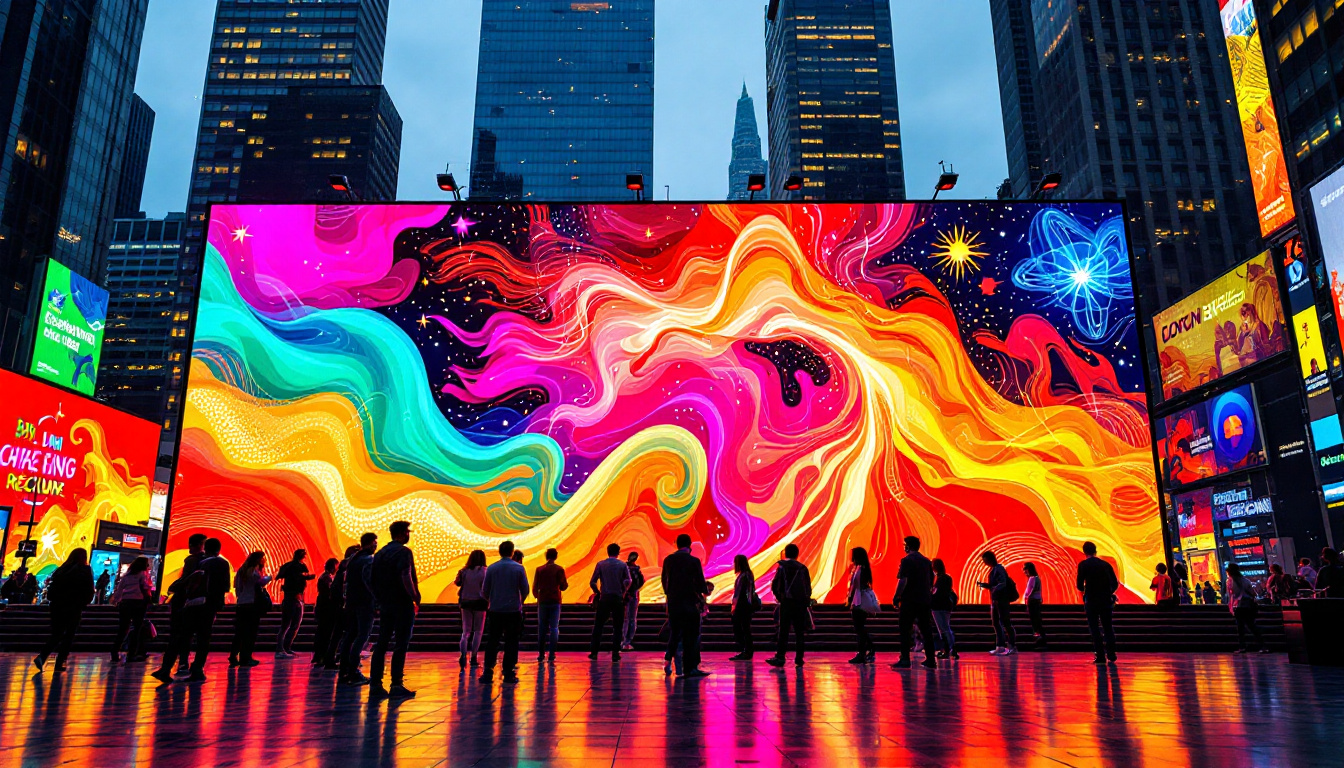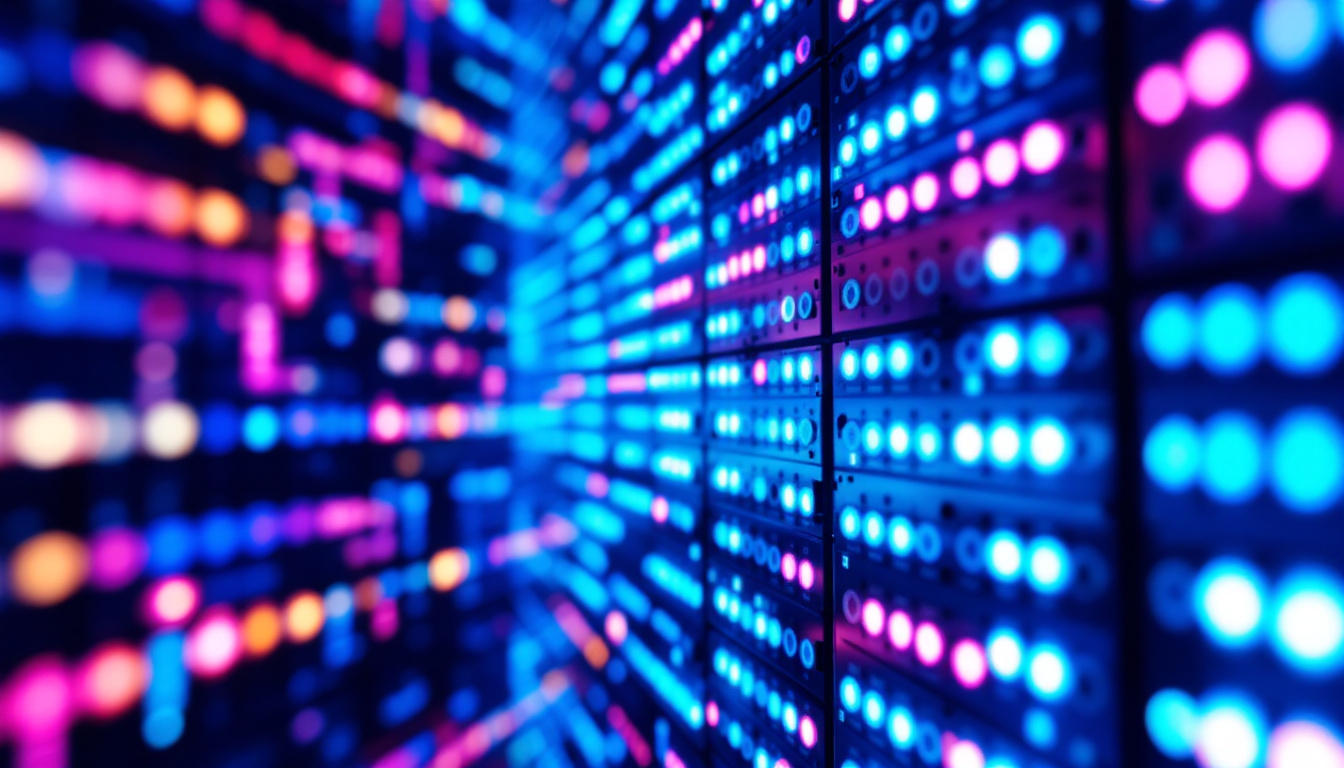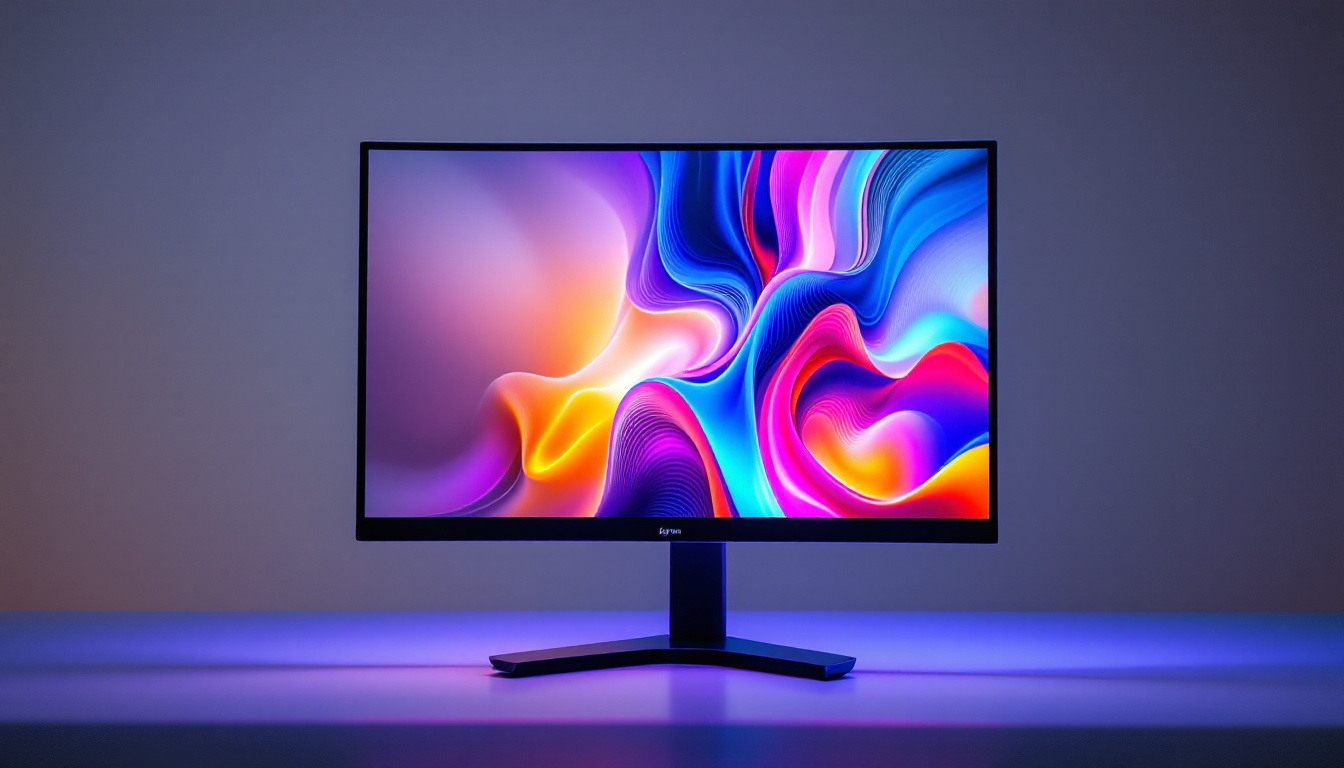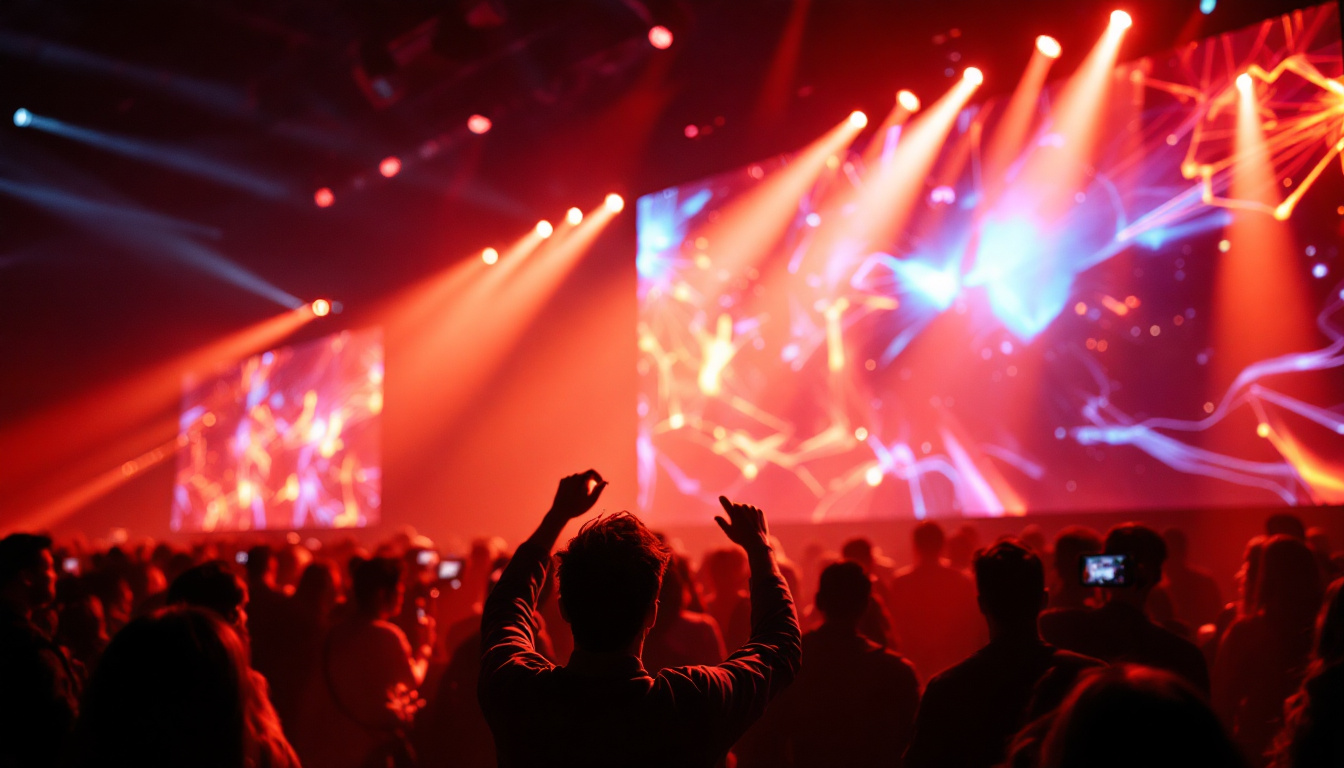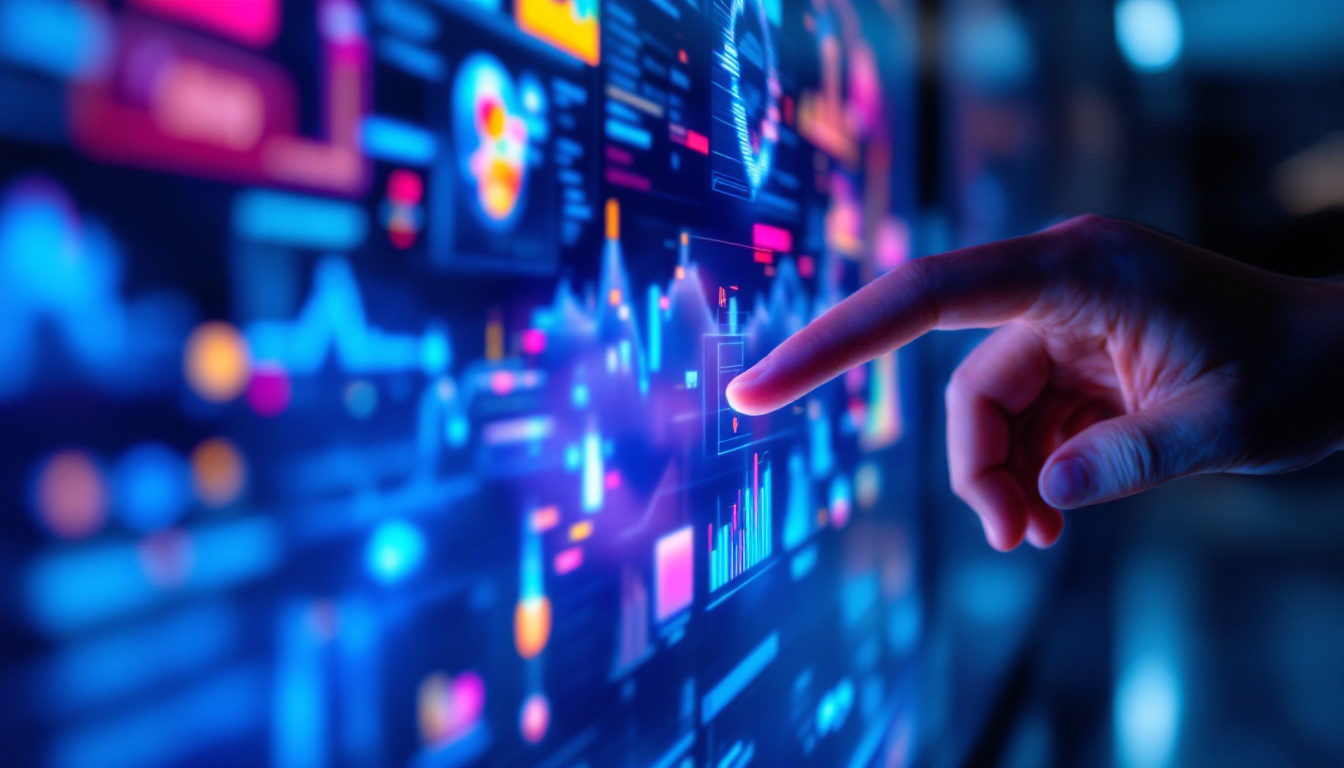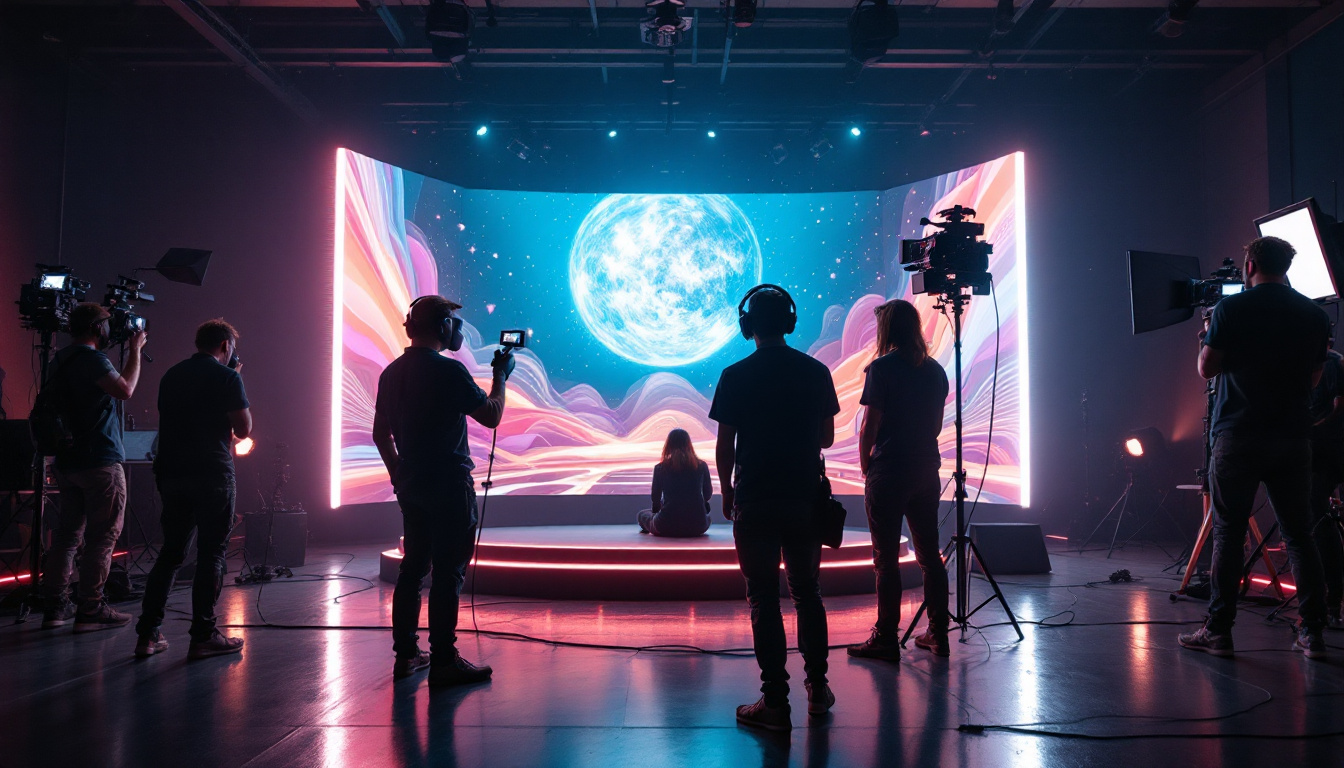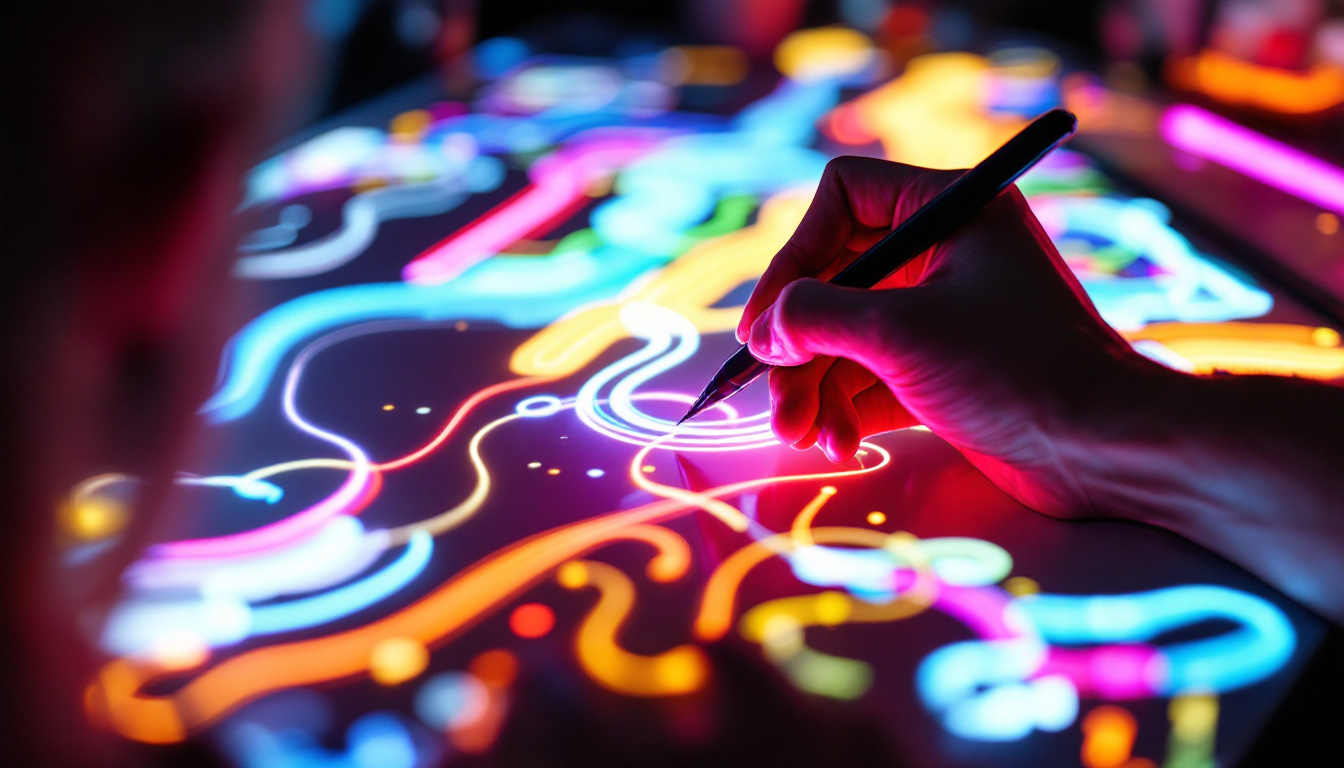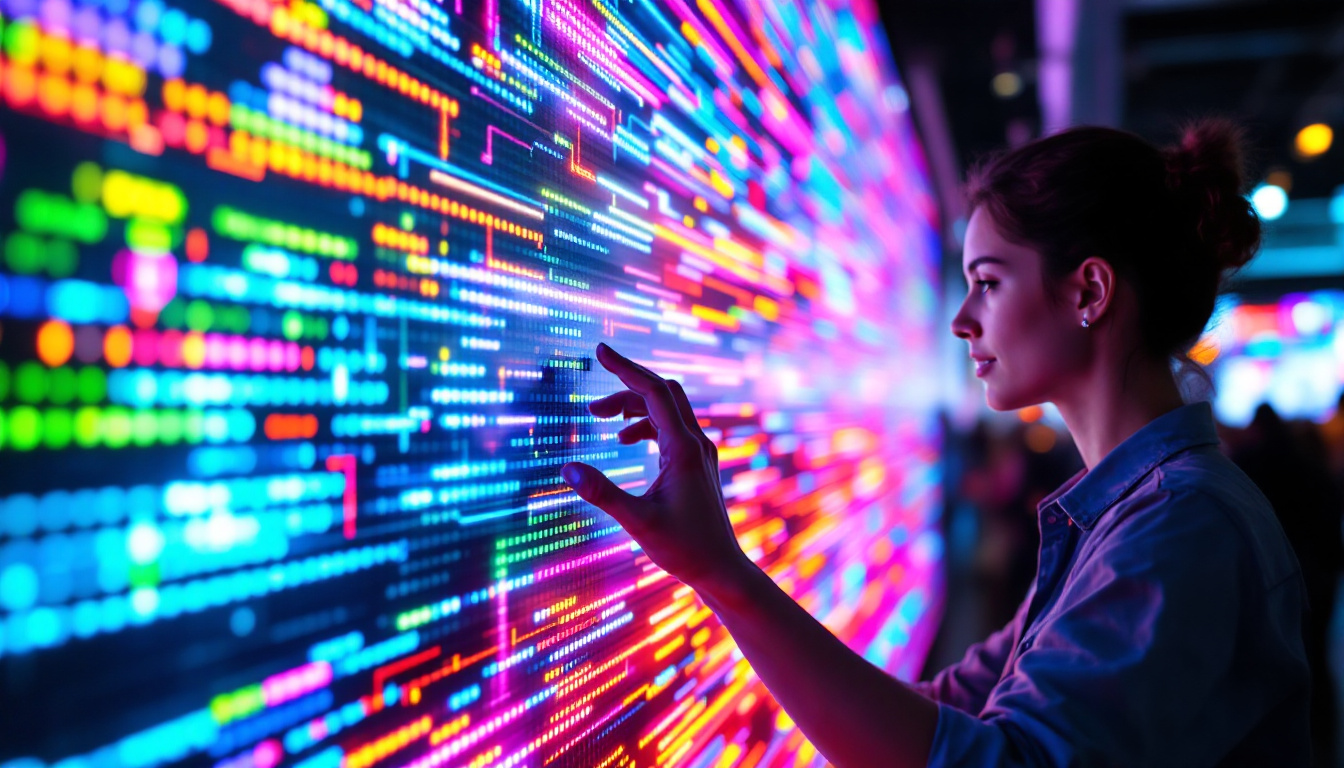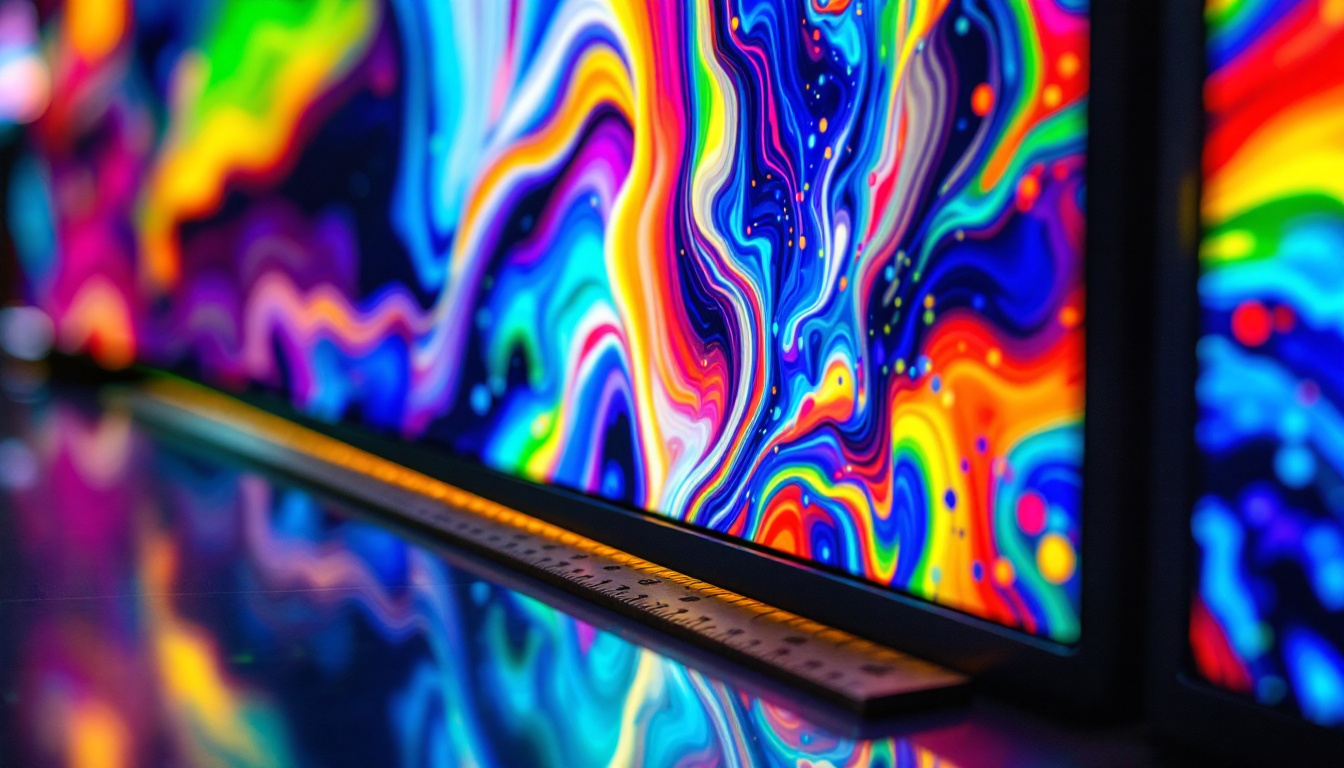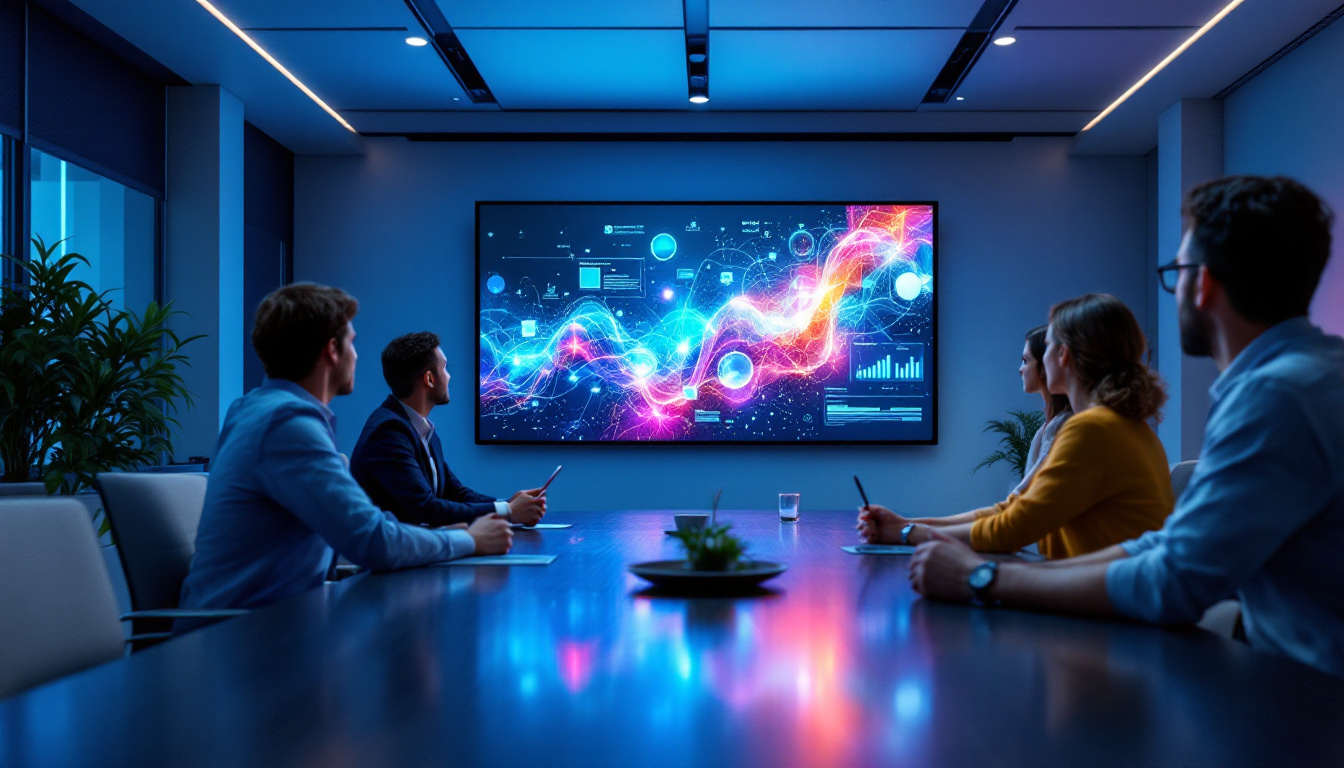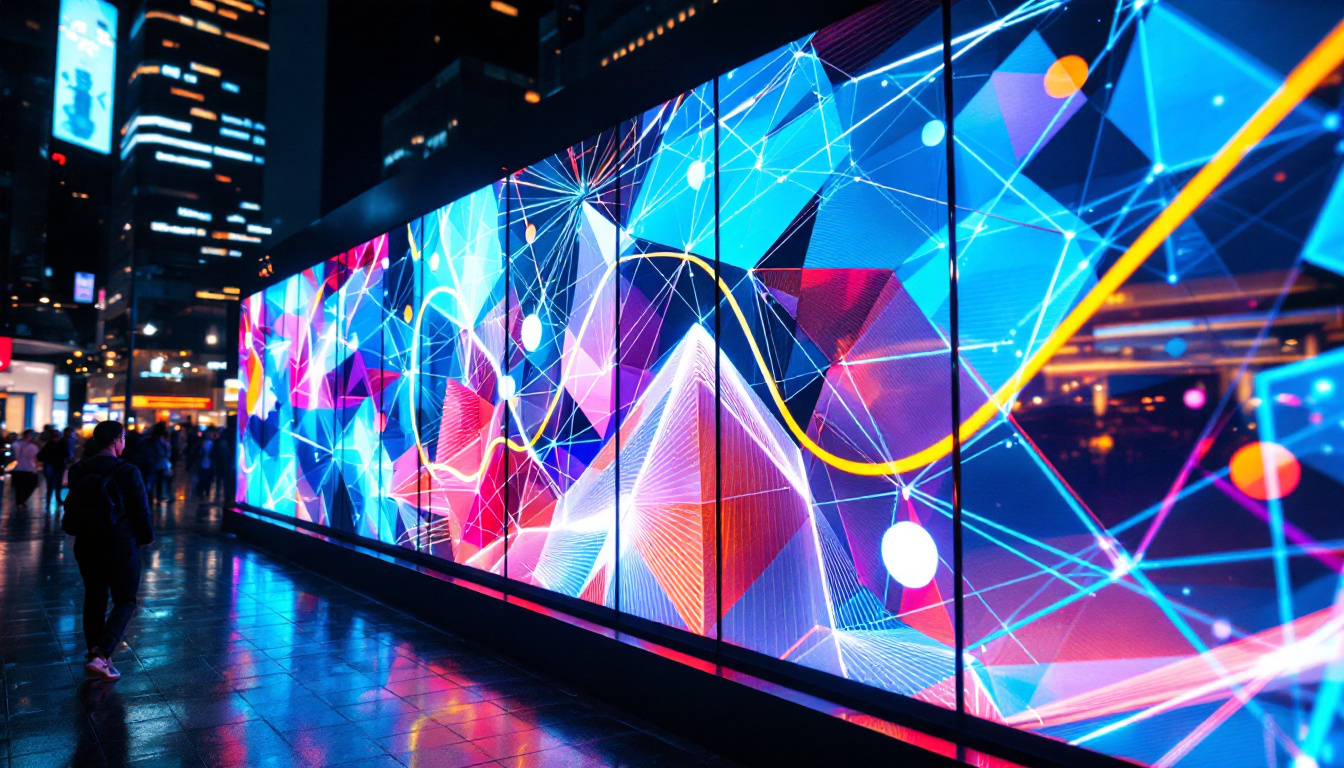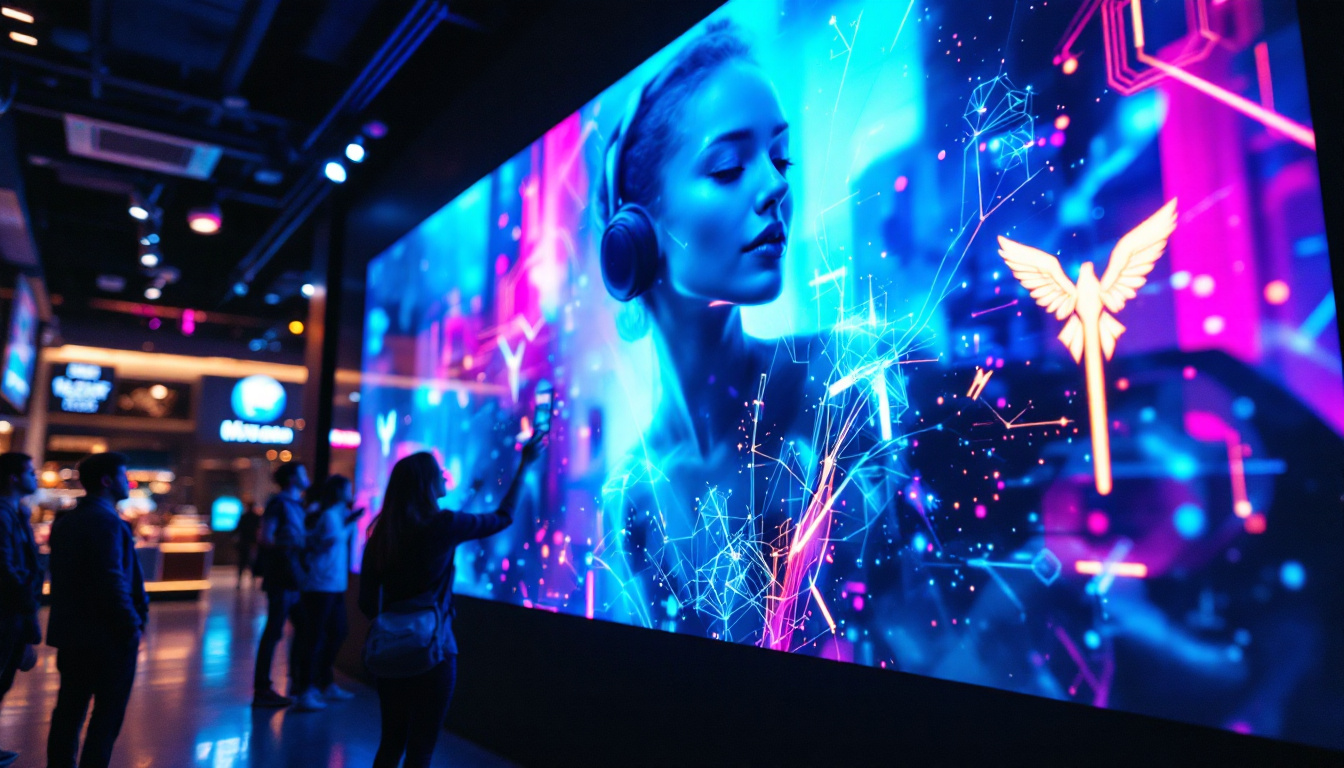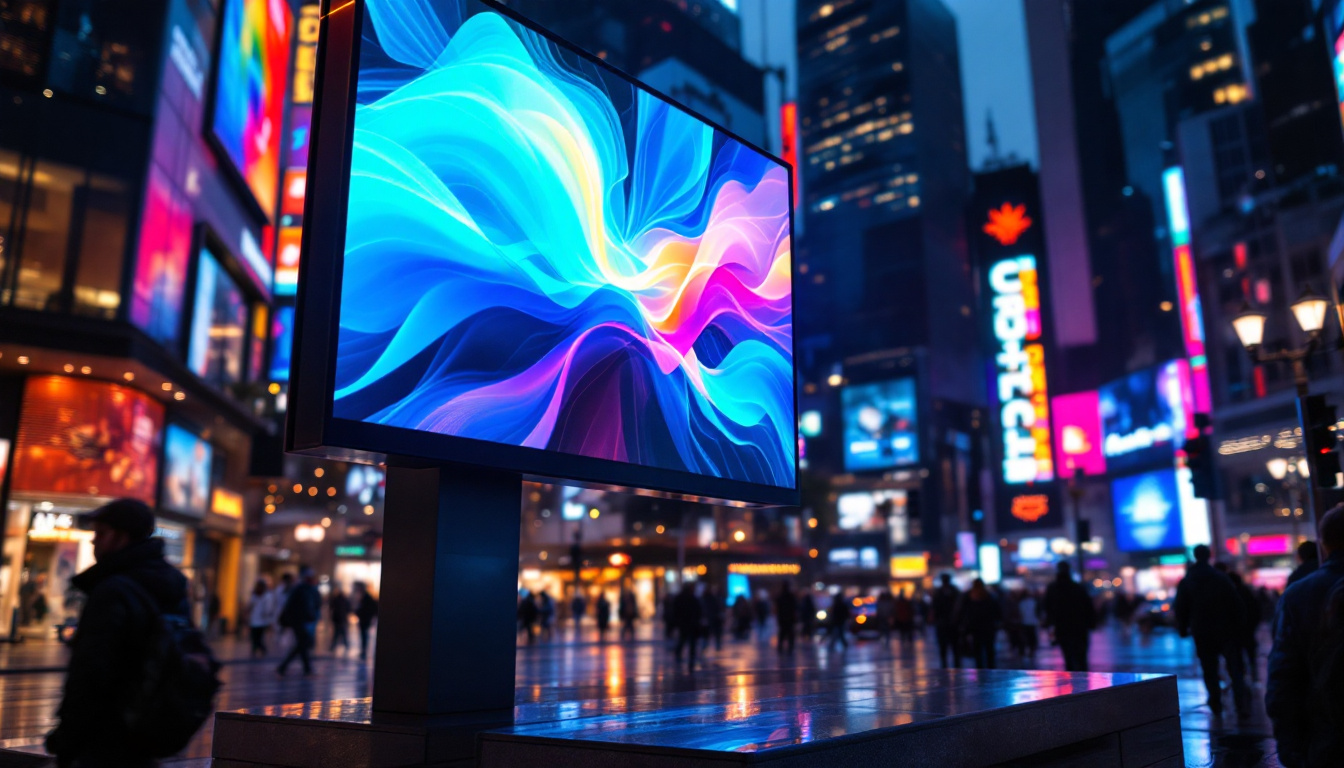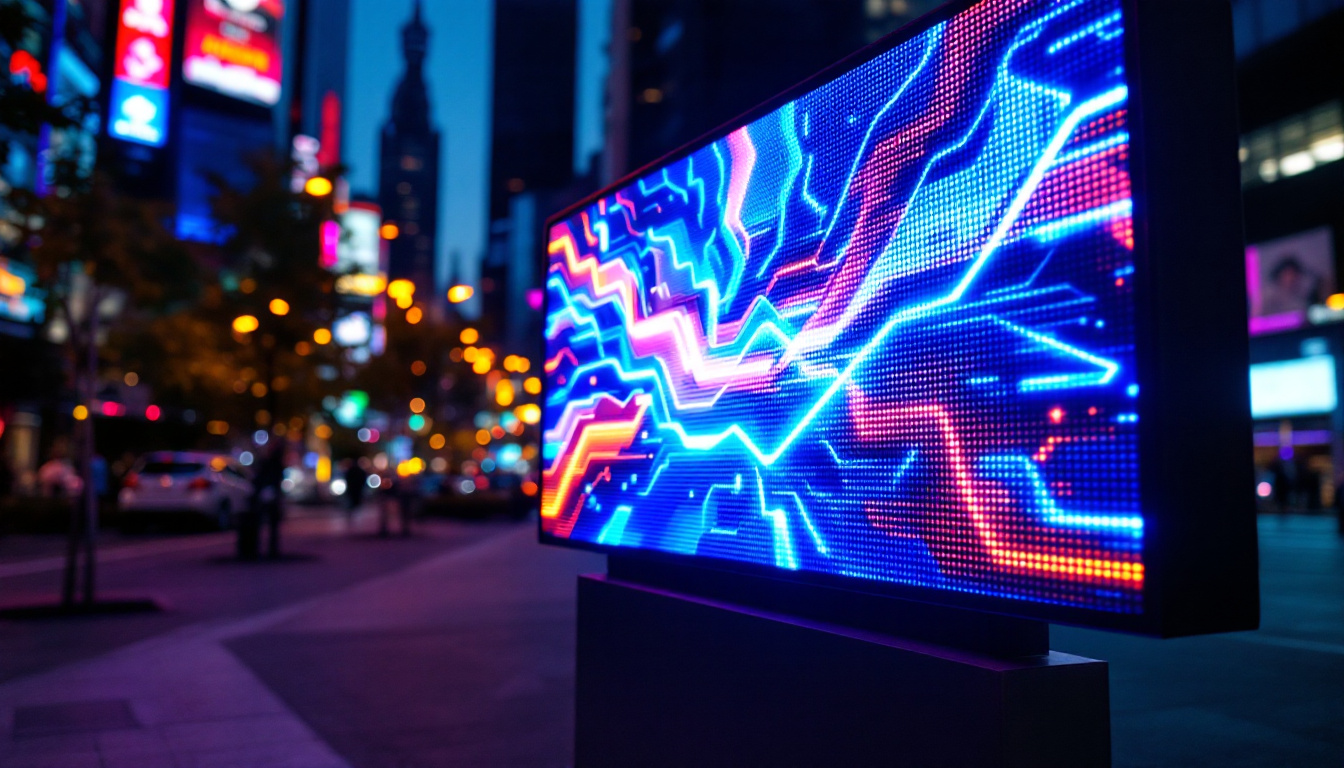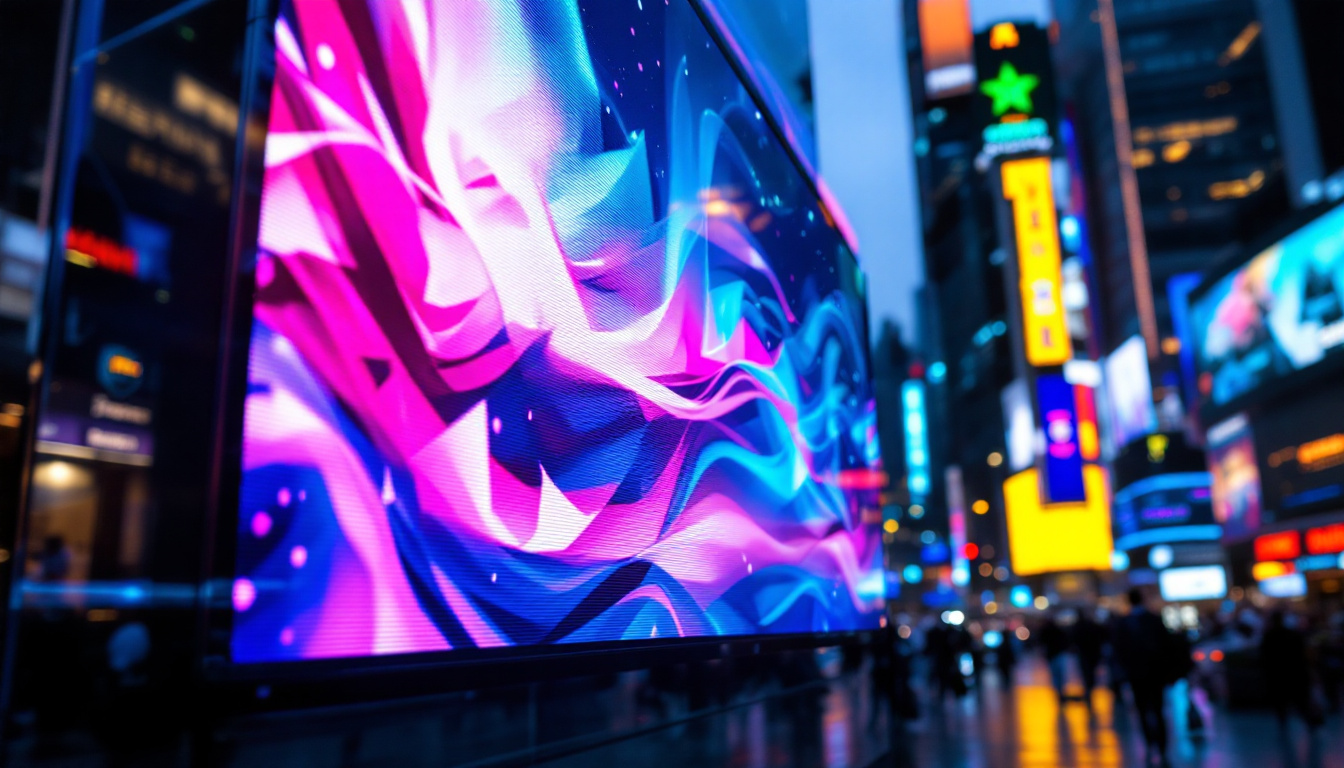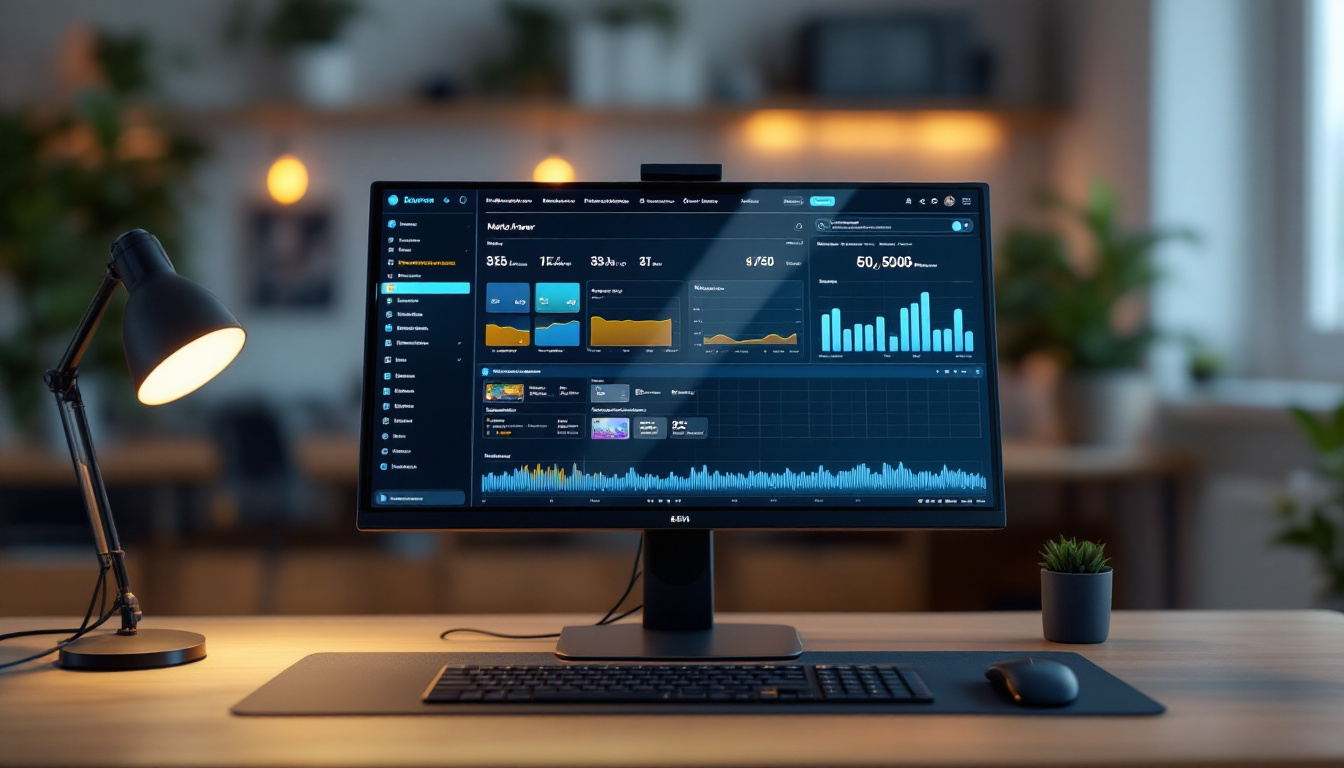In today’s digital age, LED displays have become an essential part of our lives, transforming the way information is presented. From billboards to televisions, the versatility and efficiency of LED technology have made it a popular choice across various industries. This article delves into the intricacies of LED displays, exploring their components, functioning, and applications.
Understanding LED Technology
LED, or Light Emitting Diode, is a semiconductor device that emits light when an electric current passes through it. This technology has revolutionized the display industry due to its energy efficiency, longevity, and vibrant color output. Unlike traditional incandescent bulbs, which waste a significant amount of energy as heat, LEDs convert a much higher percentage of energy into visible light, making them a more sustainable choice for both consumers and manufacturers alike.
The Basics of LED Functionality
At its core, an LED is composed of a chip made from a combination of semiconductor materials. When electricity is applied, electrons move through the semiconductor, releasing energy in the form of photons, which we perceive as light. This process is known as electroluminescence, and it is the fundamental principle behind LED technology. The color of the light emitted depends on the energy band gap of the semiconductor materials used, allowing for a wide spectrum of colors to be produced simply by altering the composition of the materials.
Types of LEDs
There are various types of LEDs, each serving different purposes. The most common types include:
- Standard LEDs: Used in indicator lights and simple displays.
- High-Power LEDs: Suitable for applications requiring intense light output, such as automotive lighting.
- RGB LEDs: Capable of producing a wide range of colors by combining red, green, and blue light.
In addition to these, there are also specialized LEDs like OLEDs (Organic Light Emitting Diodes) that are used in high-definition displays and flexible screens, showcasing the versatility of LED technology. Furthermore, the advent of smart LED technology has introduced features such as dimming, color changing, and remote control capabilities, allowing users to customize their lighting environments more than ever before. This integration of technology into everyday lighting solutions not only enhances aesthetic appeal but also contributes to energy savings and improved user experiences.
Components of an LED Display
LED displays are composed of several key components that work together to create the final visual output. Understanding these components is crucial for grasping how LED displays function.
Pixel Matrix
The pixel matrix is the heart of an LED display. Each pixel consists of multiple LEDs, typically arranged in a grid format. The resolution of the display is determined by the number of pixels it contains, influencing the clarity and detail of the images presented. Higher resolution displays, with more pixels per inch (PPI), allow for more intricate images and smoother transitions between colors. This is particularly important in applications such as digital signage and video walls, where viewers are often positioned at varying distances from the display.
Control System
The control system is responsible for managing the display’s operation. It processes incoming data, converts it into a format suitable for the LED matrix, and controls the brightness and color of each pixel. Advanced control systems can also synchronize multiple displays for larger installations. These systems often include software that allows for real-time updates and remote management, enabling operators to change content dynamically based on audience engagement or time of day. Additionally, features like color calibration and image scaling ensure that the display maintains visual integrity across different environments and lighting conditions.
Power Supply
LED displays require a stable power supply to function effectively. The power supply converts AC voltage from the mains into the DC voltage needed by the LEDs. It is essential for maintaining consistent brightness and preventing flickering. Moreover, the power supply must be capable of handling fluctuations in demand, especially in large installations where multiple displays might be operating simultaneously. High-quality power supplies are designed with built-in protections against overvoltage and overheating, ensuring the longevity of the display. In some cases, energy-efficient power supplies are employed to reduce overall power consumption, aligning with sustainability goals in modern display technology.
How LED Displays Work
The operation of LED displays involves a series of steps that convert digital signals into visual representations. This process is seamless and occurs in real-time, allowing for dynamic content display.
Data Input
The first step in the operation of an LED display is data input. This can come from various sources, such as computers, video players, or broadcasting systems. The data is typically in a digital format, which needs to be processed by the control system. Depending on the application, the input can vary significantly; for instance, a sports arena might receive live feeds from cameras, while a retail display could showcase pre-recorded advertisements. This versatility in data sources allows LED displays to be used in a wide range of environments, from large-scale outdoor billboards to intimate indoor screens.
Signal Processing
Once the data is received, the control system processes the signals to determine how each pixel should behave. This includes calculations for color mixing, brightness levels, and timing, ensuring that the display presents a coherent image or video. Advanced algorithms are often employed to enhance image quality, such as dynamic contrast adjustment and frame interpolation, which help to smooth out motion and improve the overall viewing experience. Additionally, signal processing can adapt to ambient light conditions, automatically adjusting brightness to ensure optimal visibility in varying environments, whether it’s a bright sunny day or a dimly lit room.
Display Output
After processing, the control system sends signals to the pixel matrix, instructing each LED on how to light up. The result is a vibrant display that can show anything from static images to full-motion video, captivating audiences with its clarity and brightness. Each LED in the matrix is carefully calibrated to produce a specific color and intensity, allowing for a wide color gamut and high dynamic range. This precision is crucial for applications such as digital signage, where brand colors must be accurately represented, or in artistic installations, where the interplay of light and color can create stunning visual effects. Furthermore, the modular nature of LED displays allows for easy scaling; multiple panels can be combined to create larger displays, making them suitable for everything from small retail spaces to massive stadium screens that can be seen from great distances.
Applications of LED Displays
LED displays have a wide range of applications across various sectors, demonstrating their versatility and effectiveness. Here are some notable uses:
Advertising
One of the most prominent applications of LED displays is in advertising. Billboards and digital signage utilize LED technology to attract attention with dynamic content. The ability to change advertisements in real-time allows businesses to target specific audiences effectively.
Entertainment
In the entertainment industry, LED displays are used in concerts, theaters, and sporting events. Large screens enhance the audience’s experience by providing clear visuals, even from a distance. Additionally, LED walls can create immersive environments, transforming venues into captivating experiences.
Information Display
LED displays are also widely used for information dissemination. public transport systems, airports, and educational institutions utilize LED screens to convey important messages, schedules, and announcements. Their visibility and clarity ensure that information is easily accessible to the public.
Advantages of LED Displays
LED displays offer numerous advantages that make them a preferred choice for various applications. Understanding these benefits can help in making informed decisions when selecting display technology.
Energy Efficiency
One of the standout features of LED displays is their energy efficiency. Compared to traditional display technologies, such as LCD and plasma, LEDs consume significantly less power. This not only reduces operational costs but also contributes to environmental sustainability.
Longevity
LED displays are known for their long lifespan, often exceeding 50,000 hours of operation. This durability reduces the need for frequent replacements, making them a cost-effective solution in the long run. Their resilience to shock and vibration further enhances their longevity.
Vibrant Colors and Brightness
LED technology is capable of producing vibrant colors and high brightness levels, making displays visible even in bright daylight. This quality is particularly advantageous for outdoor applications, where visibility is crucial for effective communication.
Challenges and Considerations
Despite their many advantages, LED displays also come with challenges that need to be considered. Understanding these issues can help users make better choices when implementing LED technology.
Initial Costs
The initial investment for LED displays can be higher than traditional display technologies. While the long-term savings on energy and maintenance can offset these costs, budget constraints may limit options for some businesses or organizations.
Heat Management
LED displays generate heat during operation, which can affect performance and longevity if not managed properly. Adequate cooling systems are essential to prevent overheating, especially in large installations where multiple displays are used.
Color Calibration
To achieve the best visual output, color calibration is necessary. Variations in manufacturing can lead to discrepancies in color reproduction between different displays. Regular calibration ensures consistency and accuracy in color representation.
The Future of LED Displays
The future of LED displays looks promising, with ongoing advancements in technology paving the way for even more innovative applications. As industries continue to evolve, LED displays are expected to play a central role in shaping the visual landscape.
Emerging Technologies
Developments in micro-LED and OLED technologies are set to revolutionize the display market. These technologies offer improved color accuracy, flexibility, and even transparency, opening up new possibilities for creative applications.
Integration with Smart Technology
The integration of LED displays with smart technology is another trend on the rise. Smart displays can connect to the internet, allowing for real-time updates and remote management. This capability enhances their functionality, making them an even more powerful tool for communication and advertising.
Environmental Considerations
As sustainability becomes a priority for many organizations, LED displays are well-positioned to meet these demands. Their energy efficiency and long lifespan contribute to lower carbon footprints, making them an environmentally friendly choice for businesses looking to reduce their impact.
Conclusion
LED displays have transformed the way information is shared and consumed, offering unparalleled clarity, brightness, and versatility. From advertising to entertainment, their applications are vast and varied, making them an integral part of modern communication strategies. As technology continues to advance, LED displays will undoubtedly evolve, further enhancing their role in our daily lives.
Understanding the components, functionality, and advantages of LED displays is crucial for anyone considering their implementation. With their numerous benefits and ongoing innovations, LED technology stands as a testament to the power of modern engineering in shaping our visual experiences.
Explore Cutting-Edge LED Displays with LumenMatrix
Ready to elevate your visual communication? Discover the innovative world of LumenMatrix, where our advanced LED display modules bring your content to life. Whether you’re looking for Indoor or Outdoor LED Wall Displays, Vehicle LED Displays, LED Poster Displays, LED Sports Displays, Floor LED Displays, Custom LED Displays, All-in-One LED Displays, or LED Transparent Displays, LumenMatrix has the solution to captivate your audience and amplify your message. Experience the future of digital signage with our state-of-the-art technology designed to engage and inspire. Check out LumenMatrix LED Display Solutions today and transform the way you share your vision with the world.

